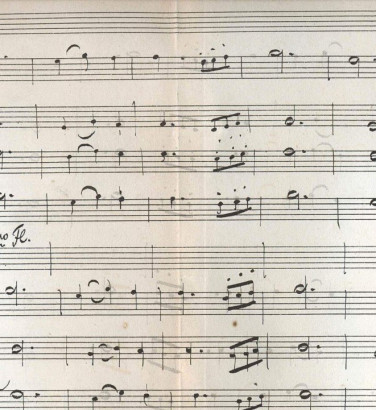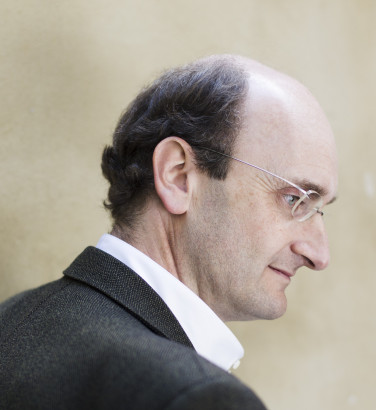
How the waltz conquered the world
4 Dec 2023
News Story
An evening at Johann Strauss' byFranz von Bayros (detail): Strauss is at the piano with his wife Adele standing behind him; Brahms (two from the left) is among the guests.
The Viennese waltz as we know it today emerged during the 1820s, with its heyday arguably coming some forty years later, but the Austrian love of this particular dance goes back a lot further. Its precursor the Ländler, a country dance with the same distinctive rhythm, can be heard in the likes of Mozart’s Symphony No 39, written in 1788, and only three years later, the third movement of Haydn’s Symphony No 94 (Surprise) started very much in the style of a fast waltz.
It was in 1815, however, that the enduring popularity of this dance was really cemented, when European leaders returned home from hammering out a peace deal at the Congress of Vienna, after the downfall of Napoleon – not that you’d necessarily have known it from reports of the entertainment laid on for the delegates. As the Prince de Ligne wryly observed, “le congrès ne marche pas, il danse”: essentially, the Congress was too busy dancing to carry out its intended purpose. As the person in change of the social calendar, de Ligne’s quip was more likely self-congratulatory than critical, and also reflected the extent to which important matters were negotiated in less formal contexts than at the conference table.
Already known in some British circles by this time, the waltz was far from unanimously welcomed: it was bad enough that it allowed couples to dance in much closer physical contact than what was considered acceptable, but the fact they were no longer dancing as part of a group was of even greater concern. With no complicated steps to learn, this was a democratic dance at heart, one that could foster revolutionary behaviours and by extension, cause the collapse of polite society. Perhaps worst of all, however, was the risk to personal morals, specifically those of respectable women:
It is quite sufficient to cast one’s eyes on the voluptuous intertwining of the limbs and close compressure on the bodies in their dance, to see that it is indeed far removed from the modest reserve which has hitherto been considered distinctive of English females.
While the whiff of scandal around this new dance – "no voluptuous intertwining please, we're English" – only contributed to the waltz's popularity on this side of the Channel, there were no such concerns back in Vienna, where it was rapidly gaining respectability thanks to Joseph Lanner and Johann Strauss the Elder. Likely propelled by their friendly rivalry, it seems they were also helped by the establishment wishing to exploit the waltz as a distraction from festering political unrest. While the powers that be in Britain saw only danger in the new dance, the Austrian authorities seized the opportunity to use it as a modern equivalent of ancient Rome's bread and circuses.
Strauss was an ambitious man, taking his orchestra on foreign tours and writing music designed to appeal to his audiences there: his 1838 Paris Waltzes quote the Marseillaise (at a time when it had been repealed as the French national anthem), while his Homage to Queen Victoria of Great Britain, composed for her coronation that same year, was clearly a charm offensive. With much of the groundwork having been laid by his father, Johann the Younger added Poland, Russia and the United States to the touring roster and expanded the waltz into the form we know today. There are over 150 of them to his name – not counting polkas, quadrilles and other dances – ensuring there is no shortage of lesser-known works for orchestras from the Vienna Philharmonic to the SCO to programme in their New Year’s Day concerts.
No matter how popular it may have grown elsewhere, however, the waltz has become an integral part of Austrian life. Institutions of every kind – from schools to businesses, all the way up to the Vienna State Opera – hold their own ball during the ball season, which runs from 11 November to Shrove Tuesday (i.e. stopping before Lent), and the Austrians pride themselves on knowing how to dance. Remarkably, it carries over into their speech: even people who don’t understand Austrian German have identified a lilt in the way it is spoken!
Related Stories
![]()
Mozart and the symphony
22 December 2025
Stuck between the symphonies of Haydn and Beethoven, where do Mozart's fit in?![]()
Unfinished symphonies
15 December 2025
Your starter for ten: besides Schubert, who has an unfinished symphony to their name?![]()
Andrew Manze: "I've always loved Viennese waltzes and polkas"
1 December 2025
Our Principal Guest Conductor is really looking forward to conducting our Viennese New Year concerts!


